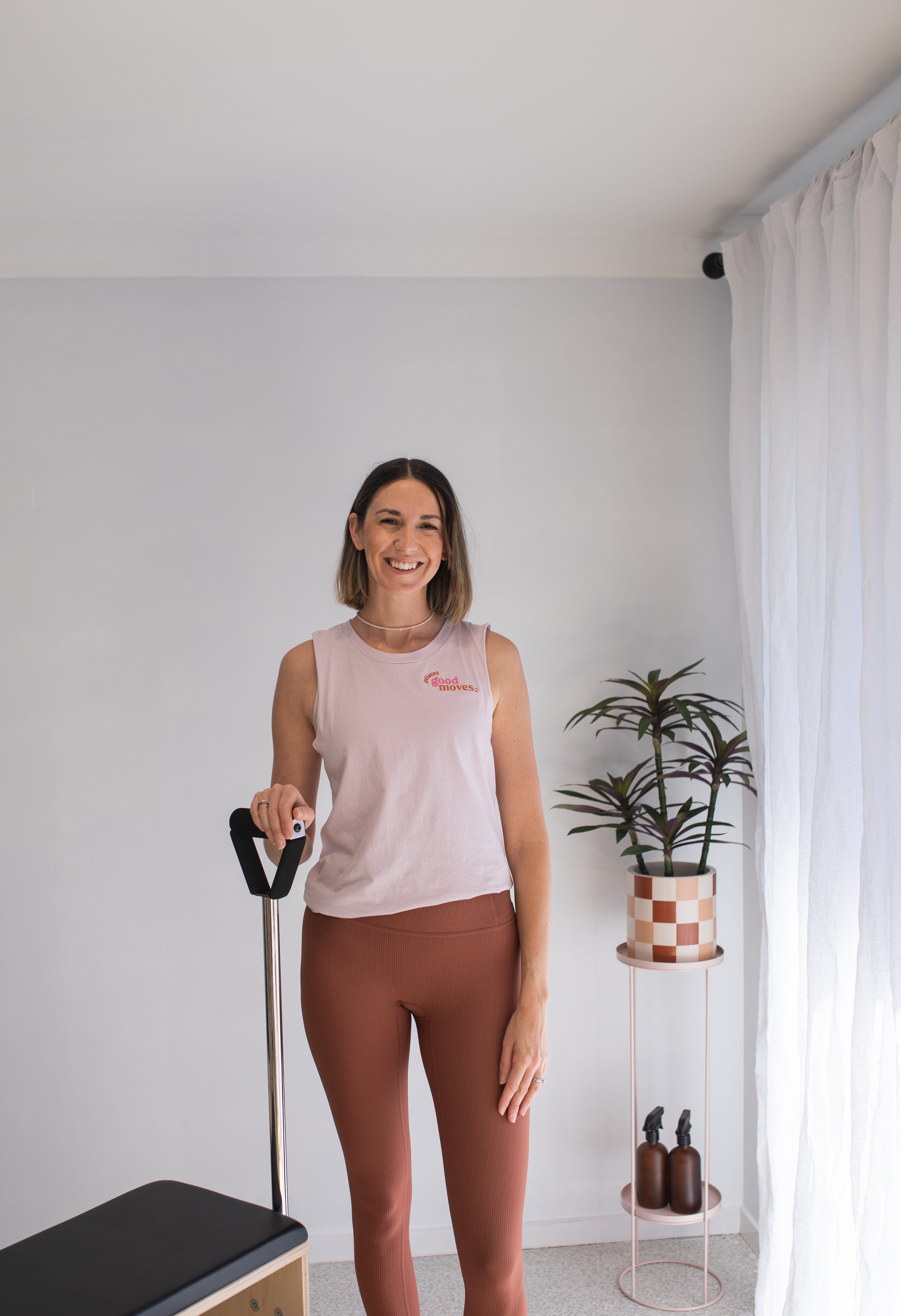Why Bone Health Matters in Your 40s and Beyond
- Dani@GoodMoves

- Jun 6
- 2 min read
by Tamara (Redlands Osteopathy), guest contributor for Good Moves Pilates.
When I first started practicing as an osteopath, I noticed something interesting: many of the women who came to see me in their 40s and 50s didn’t feel injured — just “off.” Stiff hips, unpredictable joints, a sore back that seemed to come out of nowhere, or a general sense of fragility they couldn’t explain.
Often, what was really shifting beneath the surface was their bone health — and most had no idea it was happening.
As women move through perimenopause and into menopause, the body’s production of oestrogen begins to decline. And while we often hear about oestrogen’s role in mood or hot flushes, fewer of us are told that this hormone is critical for maintaining strong, dense bones.
Without it, bone breakdown begins to outpace bone building — and the risk of osteopenia and osteoporosis rises. But here’s the empowering part: this transition doesn’t have to mean decline. With the right tools, you can protect your bones, build strength, and move into midlife feeling more capable than ever.
Oestrogen, Collagen & the Hidden Link to Bone Strength
Here’s something many people don’t realise: oestrogen doesn’t just affect your bones — it’s also tightly linked to collagen production. And collagen is what gives your bones, joints, and connective tissue their flexibility and resilience.
So, when oestrogen levels drop, so does collagen. You might start to notice joints that feel “creaky” or less stable, or bones that don’t bounce back like they used to. Over time, this can contribute to brittle bones and reduced shock absorption.
That’s where collagen peptides come in. These small but mighty amino acids help replenish the structural matrix of your bones and joints. Supplementing with high-quality collagen — like the new one Dani now stocks at the studio — can support strength from the inside out, especially when paired with resistance training.
Movement Is Medicine — Especially Now
Research from leaders like Dr. Vonda Wright and Dr. Stacy Sims shows that women’s bodies can build and maintain strength post-40 — but we have to train differently. Lifting light weights forever and hoping for the best won’t cut it.
Instead, the most effective way to stimulate bone growth is by challenging your muscles and bones in a safe, intelligent, and joint-friendly way — which is exactly what we do through Pilates and Osteopathy.
✅ Pilates, especially when using resistance equipment, strengthens your spine, hips, and core while improving balance and posture. This reduces fall risk — one of the greatest dangers for women with low bone density.
✅ Osteopathy helps you move more freely by releasing tension, addressing postural imbalances, and making sure your joints are working with you — not against you.
"When your body moves well, you can load it well. And when you can load it well, you can strengthen it."– Tamara, Osteopath

If you’re curious about what a personalised plan might look like — blending Pilates, osteopathy, and nutritional support — reach out. We’re here to help you make a very good move.
You can book into visit Tamara or Nick at Redlands Osteopathy in their local Cleveland practice here - https://www.redlandsosteopathy.com/ or follow them on socials - redlandsosteopathy




Comments